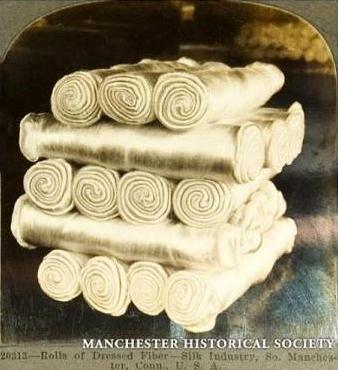



In this picture we have a closer view of the rolls from the first drawing machine. This pile of nineteen rolls represents the waste silk in a highly finished state, after having gone through various washing, cleaning, dressing and combing processes. Its velvety, flossy and clean appearance is markedly different from the entangled, begummed and dirtfilled filatures shown in the previous view (20307). These small rolls are now ready for the spinning department.
About a hundred years ago most of the silk production took place in Italy, France, India, and the Levant, including the countries of Syria and Persia. The two former countries produced the high grade material, while from the latter named regions came the low priced silk. Importations from China became very large in the decade from 1840 to 1850, after the opening of trade with that country. A heavy export trade grew up at the northern part of Shanghai and a little later also at the southern part of Canton. It was not until after 1857, after our own Commodore Perry had opened up commerce with Japan, that the Japanese began to export silk. This Japanese silk soon became such a strong competitor with the India silk that the latter rapidly lost favor, and gradually went off the market altogether.
For pictures and contemporary information on the Spinning Mill or 'Clock Tower Mill' in the
"Cheney Brothers National Historic Landmark District" page, click here.

 )
)